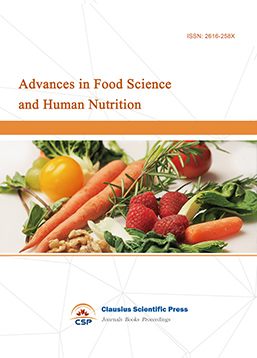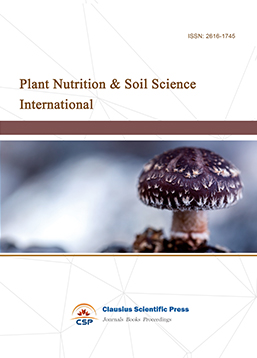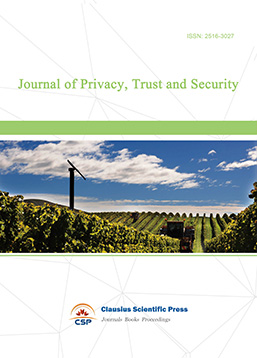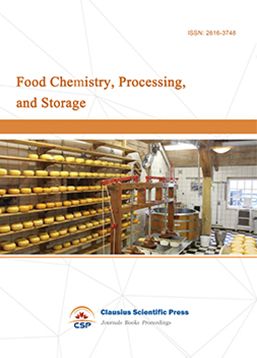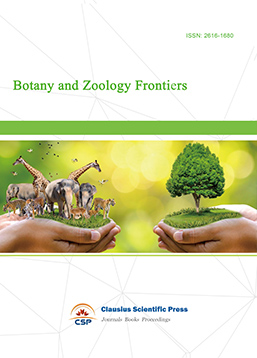The closure regularity of the touch-sensitive stigma of Mazus miquelii under artificial stimulation
DOI: 10.23977/jmcs.2023.020109 | Downloads: 5 | Views: 261
Author(s)
Yitong Yang 1
Affiliation(s)
1 Hongyi College, Wuhan University, Luojia Mountain, Wuhan, Hubei, 430072, China
Corresponding Author
Yitong YangABSTRACT
A type of stigma exists in angiosperms that closes shortly after being touched by pollinators. At present, the research on touch-sensitive stigma mainly focuses on the ecology of pollination, while the dynamic change of stigma closure is rarely studied. The larger the stigma, the faster the temporary closing speed. The dynamic changes of the stigma may be related to its internal physiological mechanism. Similar to the closing of the leaf trap of Venus flytrap, the closing movement of the touch-sensitive stigma was found to be closely related to action potentials. The study of the movement law of Venus flytrap may provide guidance for the biological law of touch-sensitive stigma. In this experiment, two populations of Rhizoma stolonifera in Wuhan Botanical Garden were used as the experimental objects, which were planted in a laboratory with no pollinators and good light and ventilation. The open stigma was selected for uniform mechanical stimulation, and the closing process of the stigma was recorded. Combined with the characteristics of the flower and the number of flowers on the inflorescence, the law of the temporary closing time of the stigma was summarized, and the movement pattern of the closing process was analyzed. The experimental results show that there are significant differences in the temporary closure time of stigma in different populations; the temporary closure time on the same inflorescence has a decreasing trend in the order from bottom to top; and there were also different movement patterns, and the differences in movement patterns were not significantly correlated with population, flower characteristics, or flower position on the inflorescence. This research is a preliminary attempt on the movement law of the touch-sensitive stigma. Through video recording, the speed can be accurately measured by judging the number of frames in the first, middle and last three time periods. However, in the later stage, high-speed cameras and corresponding image recognition software are needed to accurately extract information about the movement of the stigma.
KEYWORDS
Stolonifera, Touch-sensitive stigma, Population, Floral characteristics, InflorescenceCITE THIS PAPER
Yitong Yang, The closure regularity of the touch-sensitive stigma of Mazus miquelii under artificial stimulation. Journal of Modern Crop Science (2023) Vol. 2: 69-81. DOI: http://dx.doi.org/10.23977/jmcs.2023.020109.
REFERENCES
[1] Harder, L. D., & Thomson, J. D. (1989). Evolutionary options for maximizing pollen dispersal of animal-pollinated plants. The American Naturalist, 133(3), 323-344.
[2] Heslop-Harrison, J. (1979). Pollen-stigma interaction in grasses: a brief review. New Zealand Journal of Botany, 17(4), 537-546.
[3] Harder, L. D., & Wilson, W. G. (1998). Theoretical consequences of heterogeneous transport conditions for pollen dispersal by animals. Ecology, 79(8), 2789-2807.
[4] Hülskamp, M., Kopczak, S. D., Horejsi, T. F., Kihl, B. K., & Pruitt, R. E. (1995). Identification of genes required for pollen‐stigma recognition in Arabidopsis thaliana. The Plant Journal, 8(5), 703-714.
[5] Roulston, T. A. H., Cane, J. H., & Buchmann, S. L. (2000). What governs protein content of pollen: pollinator preferences, pollen–pistil interactions, or phylogeny? Ecological monographs, 70(4), 617-643.
[6] Preuss, D., Lemieux, B., Yen, G., & Davis, R. W. (1993). A conditional sterile mutation eliminates surface components from Arabidopsis pollen and disrupts cell signaling during fertilization. Genes & development, 7(6), 974-985.
[7] McInnis, S. M., Desikan, R., Hancock, J. T., & Hiscock, S. J. (2006). Production of reactive oxygen species and reactive nitrogen species by angiosperm stigmas and pollen: potential signalling crosstalk? New Phytologist, 172(2), 221-228.
[8] Smith‐Huerta, N. L., & Vasek, F. C. (1984). Pollen longevity and stigma pre‐emption in Clarkia. American Journal of Botany, 71(9), 1183-1191.
[9] Bhattacharya, A., & Mandal, S. (2004). Pollination, pollen germination and stigma receptivity in Moringa oleifera Lamk. Grana, 43(1), 48-56.
[10] Campbell, D. R. (1989). Measurements of selection in a hermaphroditic plant: variation in male and female pollination success. Evolution, 43(2), 318-334.
[11] Cayenne Engel, E., & Irwin, R. E. (2003). Linking pollinator visitation rate and pollen receipt. American Journal of Botany, 90(11), 1612-1618.
[12] Harder, L. D., & Wilson, W. G. (1994). Floral evolution and male reproductive success: optimal dispensing schedules for pollen dispersal by animal-pollinated plants. Evolutionary Ecology, 8(5), 542-559.
[13] Thomson, J. D., Draguleasa, M. A., & Tan, M. G. (2015). Flowers with caffeinated nectar receive more pollination. Arthropod-Plant Interactions, 9(1), 1-7.
[14] Ladd, P. G. (1994). Pollen presenters in the flowering plants—form and function. Botanical Journal of the Linnean Society, 115(3), 165-195.
[15] Howell, G. J., Slater, A. T., & Knox, R. B. (1993). Secondary pollen presentation in angiosperms and its biological significance. Australian Journal of Botany, 41(5), 417-438.
[16] Sarkissian, T. S., & Harder, L. D. (2001). Direct and indirect responses to selection on pollen size in Brassica rapa L. Journal of Evolutionary Biology, 14(3), 456-468.
[17] Ge, L. L., Tian, H. Q., & Russell, S. D. (2007). Calcium function and distribution during fertilization in angiosperms. American Journal of Botany, 94(6), 1046-1060.
[18] Richardson, S. C. (2004). Benefits and costs of floral visitors to Chilopsis linearis: pollen deposition and stigma closure. Oikos, 107(2), 363-375.
[19] Galen, C., Shykoff, J. A., & Plowright, R. C. (1986). Consequences of stigma receptivity schedules for sexual selection in flowering plants. The American Naturalist, 127(4), 462-476.
[20] Cheng, H., Wei, J., & Cheng, Z. (2022). Study on sedimentary facies and reservoir characteristics of Paleogene sandstone in Yingmaili block, Tarim basin. Geofluids, 2022.
[21] Blackmore, S., Wortley, A. H., Skvarla, J. J., & Rowley, J. R. (2007). Pollen wall development in flowering plants. New phytologist, 174(3), 483-498.
[22] Han, J., Cheng, H., Shi, Y., Wang, L., Song, Y., Zhnag, W. (2016) Connectivity analysis and application of fracture cave carbonate reservoir in Tazhong. Science Technology and Engineering, 16(5), 147-152.
[23] Zinkl, G. M., Zwiebel, B. I., Grier, D. G., & Preuss, D. (1999). Pollen-stigma adhesion in Arabidopsis: a species-specific interaction mediated by lipophilic molecules in the pollen exine. Development, 126(23), 5431-5440.
[24] Hanlie Cheng, Dong Yang, Changsong Lu, Qiang Qin, David Cadasse, "Intelligent Oil Production Stratified Water Injection Technology", Wireless Communications and Mobile Computing, vol. 2022, Article ID 3954446, 7 pages, 2022.
[25] Cariveau, D., Irwin, R. E., Brody, A. K., Garcia‐Mayeya, L. S., & Von Der Ohe, A. (2004). Direct and indirect effects of pollinators and seed predators to selection on plant and floral traits. Oikos, 104(1), 15-26.
[26] Hou, Z. K., Cheng, H. L., Sun, S. W., Chen, J., Qi, D. Q., Liu, Z. B. (2019) Crack propagation and hydraulic fracturing in different lithologies. Applied Geophysics, 16(2), 243-251.
[27] Harder, L. D. (1990). Pollen removal by bumble bees and its implications for pollen dispersal. Ecology, 71(3), 1110-1125.
| Downloads: | 253 |
|---|---|
| Visits: | 13552 |

 Download as PDF
Download as PDF